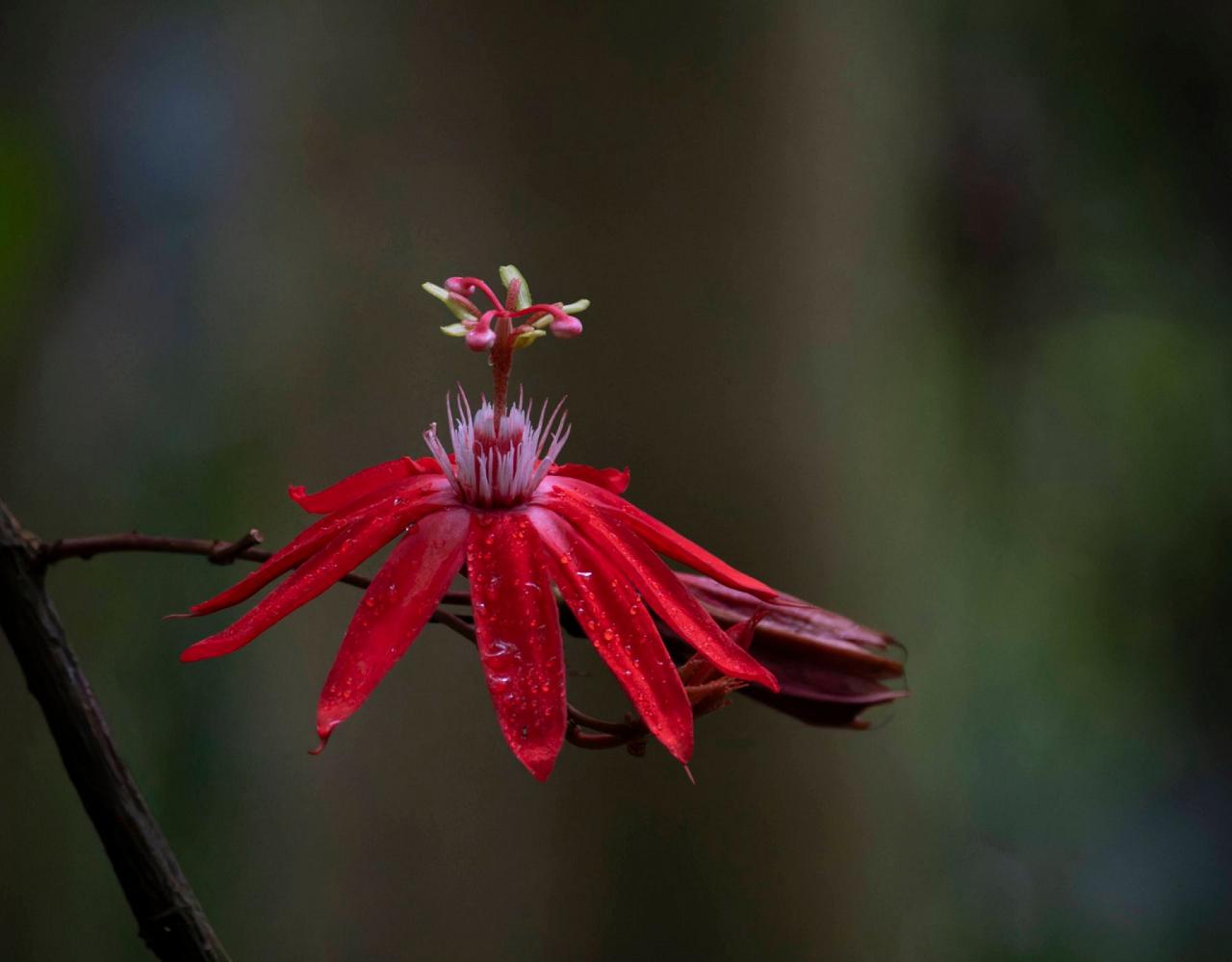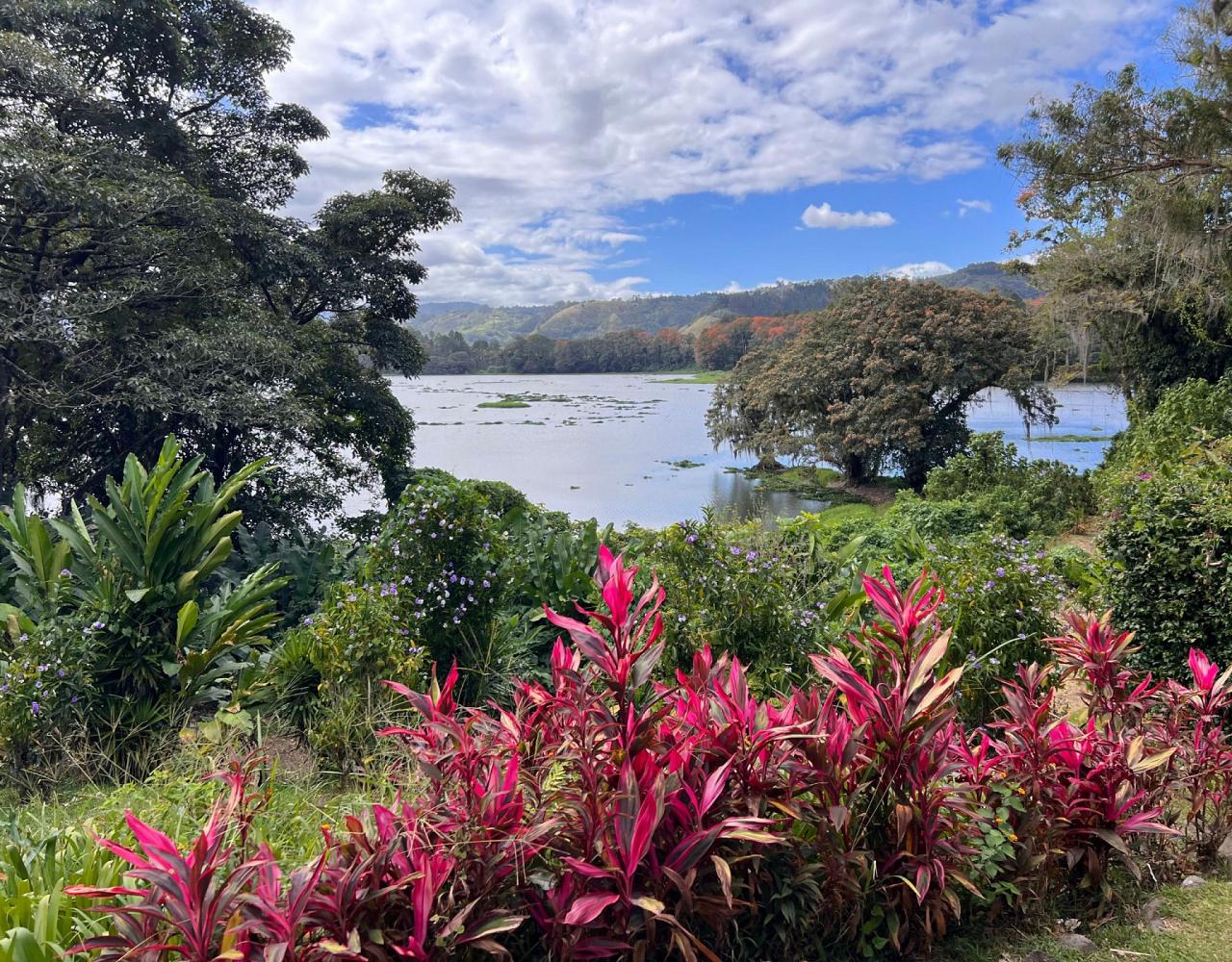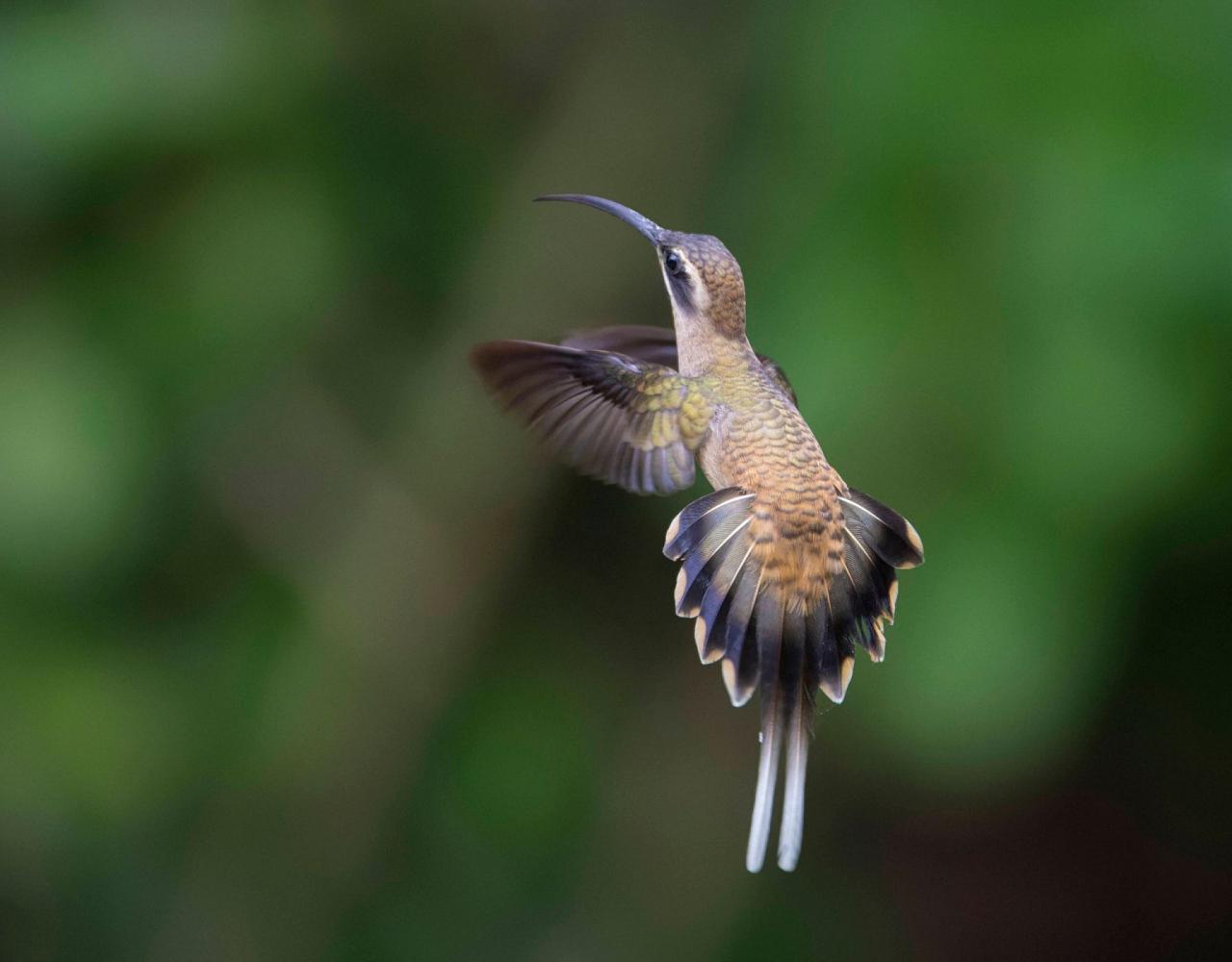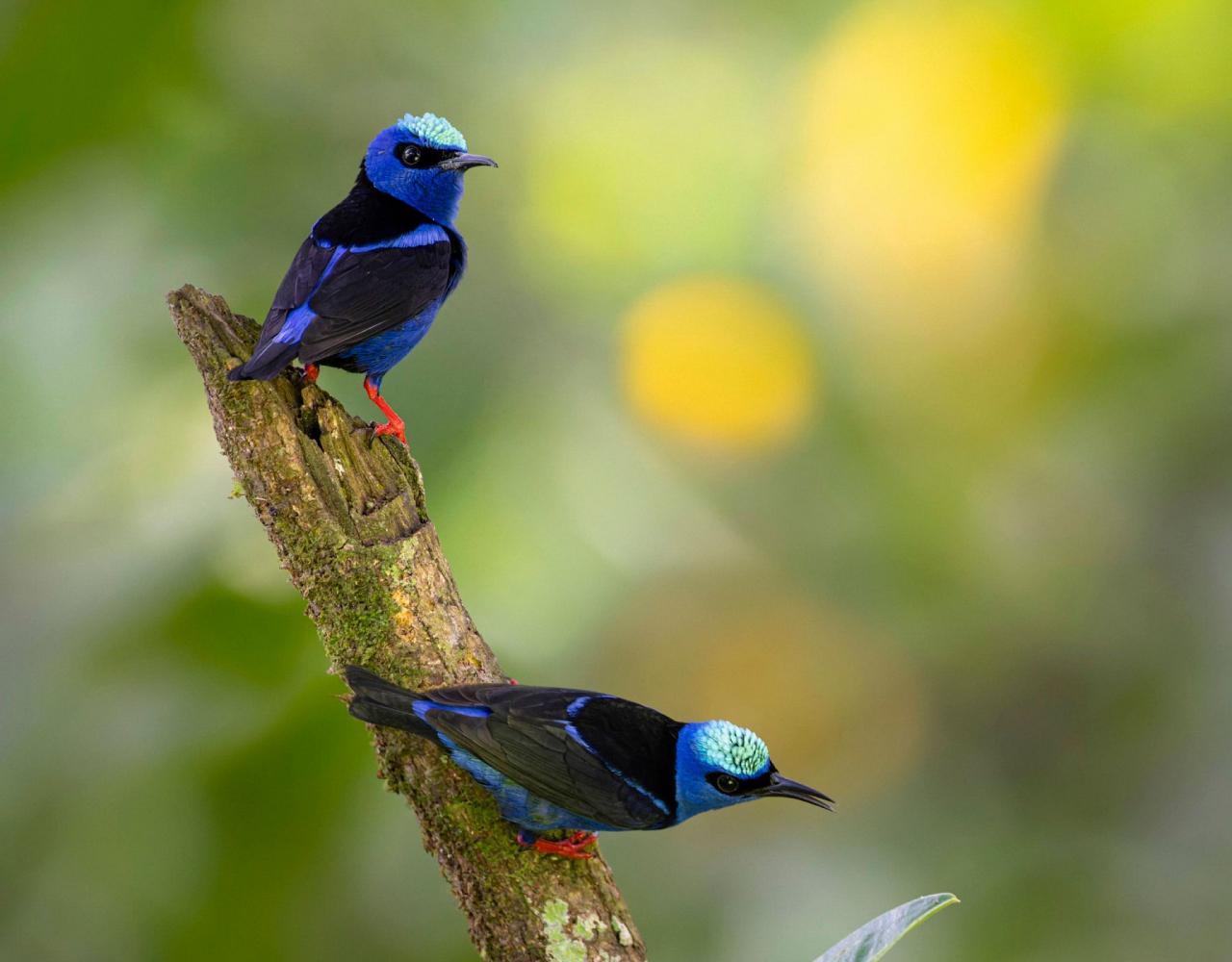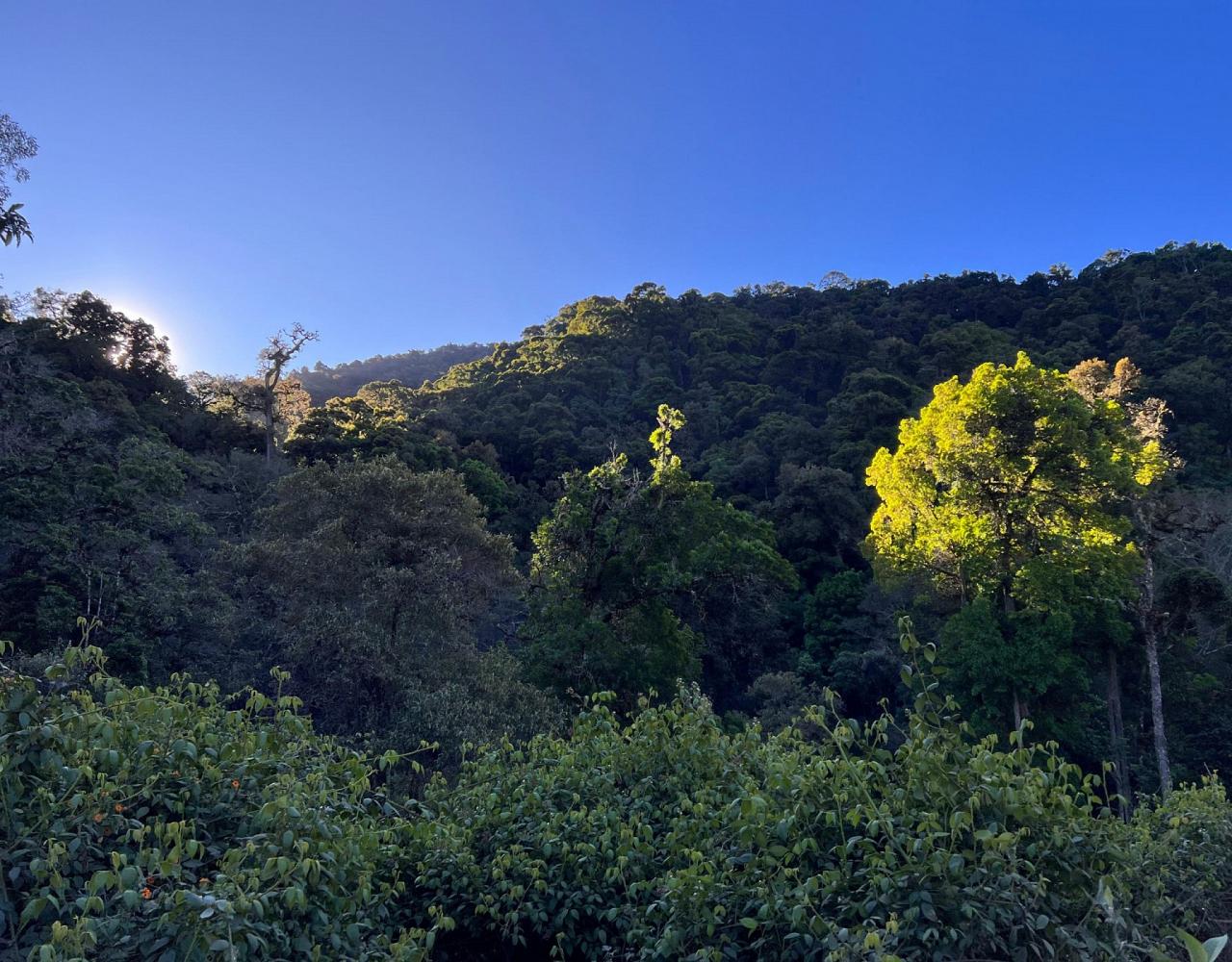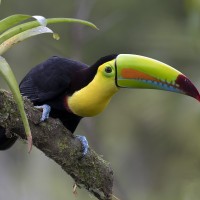- Overview
- Full Itinerary
- Extensions
- Photo Gallery
- Costing
- Travel Details
- Trip Reports
- Guide
- Map
- Know Before You Go
- Other Trips You May Like
Few places rival Costa Rica’s ecological diversity. Over a quarter of the country is protected lands, boasting 850 bird species and 200+ mammals. Costa Rica has remained at the top of our list for traveler satisfaction, with talented guides, superb nature lodges, and fabulous birds and mammals.
On this adventure, search La Selva Biological Station for Neotropical specialties. Traverse the Continental Divide, from lowland rainforest to cloud forest. Glide down a river looking for secretive birds such as Sunbittern and Green Ibis, several species of kingfisher, Green Iguana, and Mantled Howler Monkey. Relax at a mountain lodge and witness Northern Emerald-Toucanet and Collared Redstart in the wild Savegre Valley, a special place where Resplendent Quetzal nest and American Dipper feed in the rushing stream.
Opt for the terrific Pacific Coast extension to see another suite of birds and some rare primary Pacific dry forest habitat — along with Pacific rainforest, mangroves, swamps, swamp forests, fresh and saltwater marshes, and lagoons. VERY birdy, with some mammal opportunities as well!
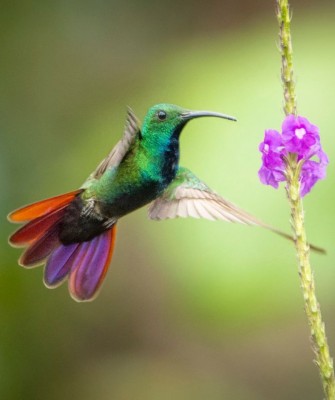



- "Our guide was absolutely outstanding. Extremely knowledgeable - great spotter!, kind, generous, funny. He knows the birds, the country, the field trips, the locations. He had many surprise destinations for us with beautiful scenery and lots of birds." — 2023 Traveler
- "The trip met my expectations exactly. I wanted to see lots of interesting birds and take some pictures, both of which I was able to do...It was extremely well organized and there were no logistical problems at all." — Jim Majure, 2023 Traveler
- "Magical - trip of a lifetime! An amazing exploration of beautiful places that one doesn't often hear about in CR. An abundance and diversity of birds and wildlife." — 2023 Traveler
- "Amazing! If I’d seen a fraction of the birds we saw I would’ve been thrilled..." — 2023 Traveler
- “Experienced Costa Rica from coast to coast. Had amazing guides having incredible knowledge of the birds, wildlife and fauna in Costa Rica. These guys were the best guides I’ve ever had in knowledge of birds, butterflies, habitats and general knowledge of Costa Rica. Also, they were very personable and caring to the participants.” — Caroline DePalma, 2023 Traveler
- “Superb - Birds, Bugs, Blooms, Butterflies and Best Guides! Hard to list all the highlights…Where would I start? The Great Potoo? The American Pygmy Kingfisher? The Three-Wattled Bell Bird? The Hummingbirds? The boat trips. The Eyelash Viper. The Bark Scorpion in our bathroom? How in the name of heavens did Johan and Robert find all those birds? Incredible guides! They kindly adjusted to the varied speeds and limitations of the group members. We were blessed.” — Janet Barrett, 2023 Traveler.
- “A varied and very enjoyable look at several different habitats in a country I knew little about before going there. I had three "target birds" - tiger heron, sun bittern, and swallow-tailed kite - and saw all three of them well. We had two excellent boat trips, on the Cano Negro wetlands and the Tarcoles River estuary. Saw great birds and other wildlife close-up.” — Adrienne Lovelock, 2023 Traveler
Tour Highlights
- Discover the stunning Resplendent Quetzal in a cloud forest at a private reserve
- Enjoy amazing views of Flame-throated Warbler, Flame-colored Tanager, and Long-tailed Silky-Flycatcher in the Rio Savegre Valley
- Marvel at close-up hummingbird viewing from the verandah at Rancho Naturalista, perhaps even the one of a kind Snowcap
- Explore and bird the fascinating archaeological site of Guayabo
- Seek out lowland rainforest specialties at La Selva Biological Station, recognized internationally as one of the most productive tropical forest research stations in the world
- Relax on a Sarapiqui River boat trip as you search for Sunbittern, Green Ibis, and Bare-throated Tiger-Heron
- Opt for a five-day Pacific Coast extension to see a mix of species east and west of the Continental Divide
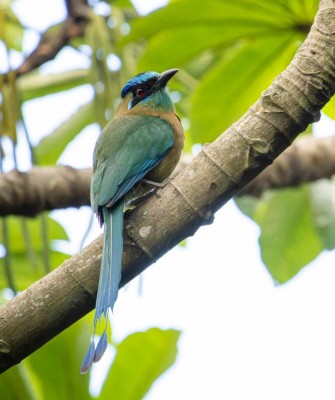



Trip Itinerary
Itineraries are guidelines; variations in itinerary may occur to account for weather, road conditions, closures, etc. and to maximize your experience.
Tues., Feb. 4 Arrival in San José
Welcome to Costa Rica! Today you arrive in San José where you are met at the airport by a representative from Horizontes, our Costa Rican host company, for a private transfer to the Hotel Bougainvillea. We select this boutique hotel for its spacious rooms, friendly service, and spectacular birdy gardens, just outside the door. This is an environmentally-friendly hotel with a commitment to our planet and hospitality. Those arriving in time can enjoy a welcome dinner with fellow traveling companions and guide. Those that arrive later than dinner have a snack tray on arrival.
Accommodations at Hotel Bougainvillea (D)
Wed., Feb. 5 Mirador Quetzales
Those who wish are welcome to get out early and walk the gardens, looking for birds and enjoying the great diversity of tropical flowers. After breakfast we depart for Cerro de la Muerte (Mountain of Death), part of the Talamanca Mountains. These 11,000 foot peaks in view were named for early explorers who, traveling on foot or by mule, risked dying of hunger, exposure, or storms. *Today our road is modern, a part of the Pan-American Highway.
As we reach the often cloud-enshrouded summit, we stop at the family-run cloud-forest reserve, Paraíso de Quetzales. Here we walk lush forest trails in search of Costa Rica’s most famous and elegant bird, the Resplendent Quetzal. Walking the cloud forest trails, we often find a host of other species as well. We then descend into the stunning valley of the Savegre River, a true realm of the Resplendent Quetzal!
Our lodge is situated at a cool 7,000 feet above sea level in an isolated and idyllic valley near the town of San Gerardo de Dota. As we descend into the valley we find a mix of pristine forest, hillside farms, and fantastic views. We stop for photographs and to see what’s in bloom along the way.
Over forty years ago, Sr. Ephraim Chacon and his brother opened a road and began a dairy farm and apple orchard in this remote Talamanca Mountain valley. Today several lodges settle naturally into the landscape here, a prime destination for birders. After settling in to our accommodations, we walk one of the lodge’s nature trails, learning about the flora and fauna of the tropical cloud forest. With luck, we spot an American Dipper feeding in the rushing trout stream! Enjoy a lovely meal tonight at the lodge’s restaurant.
Accommodations at Savegre Hotel, Natural Reserve and Spa (B,L,D)
Thurs., Feb. 6 Rio Savegre Valley | Montane Cloud Forests
Today we walk the local road where we get an excellent view of these beautiful Talamanca Range forests and their fantastic residents, like Flame-throated Warbler, Flame-colored Tanager, Long-tailed Silky-Flycatcher, Black Guan, and Northern Emerald-Toucanet. Throughout the valley, various trails lead to waterfalls, secluded canyons, and mountain vistas; several options are available to us.
Resplendent Quetzal are found in this valley year-round, and we often spot them near a favorite fruiting tree where several males may congregate. On trails that wind past rivers and lakes, we look for Collared Trogon, Collared and Slate-throated Redstart, Large-footed Finch, and Sooty Robin.
Montane oak forest dominates the area, including magnificent oaks like Wild Brazilleto, Winter’s Bark Tree, and Cipresillo. We take a stab at identifying them and then simply admire the hundreds of species of bromeliads, lichens, mosses, ferns, and the multitude of orchids and colorful flowers. Locals raise fruit on the hillsides and farm trout in small ponds.
For those that wish, a loop hike can be made up and around a ridgeline above the lodge.
Accommodations at Savegre Hotel, Natural Reserve and Spa (B,L,D)
Fri., Feb. 7 Turrialba | Rancho Naturalista
After breakfast, we drive back through the mountains toward Turrialba, where our lodge, Rancho Naturalista, lays nestled in another scenic range.
We enjoy lunch at a restaurant along our travel route and, upon our late afternoon arrival at the lodge, we enjoy birding from the veranda. This is a delight, particularly for those that fancy close-up views of hummingbirds. A number of mid-elevation Caribbean-side specialties can be found here. Temperatures are cooler at a comfortable 3000 feet. At day’s end, we are likely to see Keel-billed and Yellow-throated Toucans, and Collared Aracari coming in to roost.
Accommodations at Rancho Naturalista (B,L,D)
Sat., Feb. 8 Birding Mid-Montane Forests | Rancho Naturalista Grounds
Wake up and bird on the balcony where, with luck, a mixed group of colorful tanagers works the bananas on the feeders. We can hope for Passerini’s, Speckled, Bay-headed, Silver-throated, and Summer. White-necked Jacobin are regulars, and a special treat is the tiny Black-crested Coquette. Blue-crowned Motmot and Golden-olive Woodpecker are “yard birds.” Indeed, over 200 species have been seen from this balcony! Linger as we may, trails and exploring call.
Though small (125 acres), the reserve has a nice mix of habitats. Open crowns of Cecropia trees afford us good looks at colorful species like Green Honeycreeper, Squirrel Cuckoo, and Blue Dacnis. White-ruffed Manakin and Fasciated Antshrike call, alerting us to their presence along the trails. One of the trails leads us to hummingbird feeders set up in the forest. Here we often find the stunning Snowcap, alongside colorful Crowned Woodnymph, Rufous-tailed Hummingbird, and large Green Hermit.
Accommodations at Rancho Naturalista (B,L,D)
Sun., Feb. 9 Guayabo National Park | Sarapiqui | Selva Verde Lodge
Today we continue on to the Caribbean lowlands. En route, we visit Guayabo National Monument, a fascinating archaeological site where rocks are carved into figures in many stylized forms. Established in 1973, it is the largest and one of the most impressive archaeological sites in Costa Rica. While it does not rival the great Maya civilization sites, this complex settlement lies in a beautiful valley, perched on the side of a mountain. We find cobblestone paths, building foundations, and water canals that date from 1100 BC to 1400 AD. Forests surrounding the site vary from second growth to dense mature forest. Vegetation is lush and beautiful, and mixed flocks of colorful tanagers, grosbeaks, and orioles like the edge-effect of the excavated ruins.
We enjoy lunch along the way at a local restaurant and, once settled in at our hotel, we visit local birding hotspots around this lovely community. Many private gardens attract a rich array of hummingbirds, and having changed elevation, many species, particularly of colorful tanagers, are new.
Accommodations at Selva Verde (B,L,D)
Mon., Feb. 10 La Selva Biological Station | Sarapiqui River Boat Tour
The La Selva Biological Station is one of the premier tropical research stations in the world. Trails wind between laboratories and researchers’ residences, and then fan out to primary and secondary forests where nature abounds. Lowland rainforest is particularly diverse here, as the property is located near the confluence of two major rivers—the Rio Puerto Viejo and the Sarapiqui. The reserve is nearly 4,000 acres and connects to a forest corridor that ascends up through nearby Braulio Carrillo National Park, providing links to middle and higher elevations.
La Selva comprises 1,600 hectares (3,900 acres) of tropical wet forests and disturbed lands. Four major tropical life zones define the contiguous corridor now protecting a large portion of Costa Rica’s biodiversity. Recorded here are more than half of Costa Rica’s almost 900 species of birds, 1850 species of vascular plants, and a rich array of mammals, insects, reptiles, and amphibians. Each year, La Selva’s Christmas Bird Count is among the highest in numbers.
On trails near the Sarapiqui River we hope to see the beautiful Agami Heron and perhaps an elusive Sungrebe. Some of the other elusive species we may find include Great Curassow, Great or Slaty-breasted Tinamous, Great Potoo, and possibly Bare-necked Umbrellabird. We should see Crimson-collared and Golden-hooded Tanagers, Rufous Motmot, endemic Black-cheeked Woodpecker, beautiful Snowy Cotinga, and, high on thermals above, King Vulture. Pied Puffbird and Great Jacamar are sit-and-wait predators that dart from perches to capture large insects. Orange-billed Sparrow are gaudy denizens of the forest floor.
Butterfly enthusiasts, prepare to be amazed at all the species, including several large electric-blue Morphos. Central American Agouti and White-nosed Coati are mammals we often find.
In the late afternoon, we venture out on the Sarapiqui River for a boat trip; late afternoon is a great time to find secretive birds like Sunbittern, Green Ibis, Fasciated Tiger-Heron, several kingfishers, herons, and egrets. Yellow-naped and White-crowned Parrots make raucous noise overhead, joined by the smaller Olive-throated Parakeet. It’s beautiful to be out on the water where the temperature is cool and views of the mountains are spectacular.
Accommodations at Selva Verde (B,L,D)
Tues., Feb. 11 Departures or Extension
Enjoy breakfast at the hotel before departing. We must tear ourselves away as our bus departs for San José and the airport — or, a better idea: If time permits, veer off towards the Pacific Ocean and Costa Rica’s west side by joining our Pacific Coast Extension. By choosing the extension, you get to experience the widest range of habitats and species available—the Pacific side of the divide hosts a grand array of different species. Taking the main tour and extension together gives you a great cross-section of the country.
Pacific Coast Post-Tour Extension
Itineraries are guidelines; variations in itinerary may occur to account for weather, road conditions, closures, etc. and to maximize your experience.
Pacific Coast Birding and ‘Top Ten’ Carara National Park
See rare habitat in a less-visited side of the country with this post-tour extension to Costa Rica’s beautiful Pacific Coast. We take a mangrove boat trip on the Tarcoles River, and enjoy the birds. butterflies. and mammals of highly biodiverse Carara National Park, which shows up on many ‘top ten’ lists for Central America birding destinations. Other habitats we visit on this extension include mangroves, swamps, swamp forests, both fresh and saltwater marshes, and lagoons. This is a terrific opportunity to see another suite of birds and another side of Costa Rica without booking another plane ticket!
Tues., Feb. 11: Pacific Coast Extension
After leaving friends at the airport, our group continues on its way to the Central Pacific area, where we stay in a lovely valley with a rushing river, close to the Pacific Ocean. We arrive in time for lunch. The hotel and dining room sit aside a small river, and there is a steady stream of species coming in, including toucans and aracaris.
This afternoon we take a mangrove boat trip on the Tarcoles River. This is a great complement to our boat trip on the Sarapiqui, showing you two sides of the country. If time permits, especially if we have not seen macaws on our boat trip, we stop on a high bridge with expansive views. Though busy with traffic, this is the best place in Costa Rica to watch for Scarlet Macaw returning to roost sites. Their calls alert us and, as we wait to see their dazzling colors, we find a host of other species such as Mealy Parrot and, close-at-hand, noisy Rufous-naped Wren.
Accommodations at Cerro Lodge (B,L,D)
Wed., Feb. 12: Carara National Park
This morning we have an early start to enjoy a full morning of birding at Carara National Park, a place many consider to be one of the top ten birding spots in Central America. Here we witness birds and wildlife of a transition forest, walking trails and searching for birds, butterflies, and mammals. This park can claim almost unparalleled diversity along the Central American Pacific Coast, as many species here are at the edge of their range. This is the northern reach of species at home in Pacific Rainforest, and the southern reach for those associated with Pacific Dry Forests.
Carara’s forests’ more open nature makes it easier for us to find birds. Carara is an excellent place to observe an army-ant swarm and its attendant feeding antbirds. We may find Scaly-breasted Hummingbird or Blue-throated Goldentail. Orange-collared Manakin, Black-hooded Antshrike, Dot-winged Antwren, Dusky Antbird, and Chestnut-backed Antbird are among the more secretive species we hope to find. Vegetation is impressive in this important ecological reserve.
After lunch, we drive to La Ensenada, a country lodge on a lake. This family-run lodge, where we stay the next two nights, features 20 simple, but comfortable, cabins, a swimming pool, and a delightful open-air restaurant that prepares local foods. The lodge is part of a working cattle ranch and fruit farm, and also part of a 100-acre wildlife reserve. All cabins have ceiling fans, wood paneling, high ceilings, and private terraces. This special property holds some of the last remaining primary (old growth) dry forest, as well as a mangrove ecosystem, and is on the beautiful Gulf of Nicoya.
As we settle in, watch the sky for Magnificent Frigatebird and Brown Pelican; we may also be able to enjoy the antics of colonies of Montezuma Oropendola, Piratic Flycatcher, Squirrel Cuckoo, and colorful Cherrie’s Tanager and Spot-breasted Oriole in the trees.
Accommodations at La Ensenada Lodge (B,L,D)
Thurs., Feb. 13: Boat & Tractor Tours
After breakfast at the hotel, we venture out to enjoy a great birding site near the Gulf of Nicoya at a private reserve.
The deltas of the Bebederas River, or Rio Abangeres, both have a tremendous array of wetland habitats: mangroves, swamps, swamp forests, both fresh and saltwater marshes, and lagoons. Herons and egrets congregate here, joined by the ancient-looking Wood Stork. A verdant oasis in the driest region of Costa Rica, the Gulf of Nicoya is a birdwatcher’s paradise. Because the Tempisque is a tidal river, salt-water loving Crocodiles venture upstream. More than 300 species of birds have been recorded here, and an estimated 250,000 wading birds and waterfowl winter here, giving us tremendous opportunities for spectacular sightings.
Large-scale seasonal flooding occurs here; as the dry season progresses, the wetland habitat shrinks, concentrating the bird population. Black-bellied and Fulvous Whistling Ducks can be quite common in some years, and many North American ducks winter in the estuary. Touring by boat is the perfect way to explore its riches.
At cooler times of the day we walk trails in tropical dry forest. The limestone cliffs in this area pose quite a contrast to the volcanic region we previously visited. There are also pre-Hispanic archaeological sites in the region.
In the afternoon we tour the ranch by tractor, ending our day with wine and cheese at sunset?such a life! In dry forests we watch for White-throated Magpie-Jay, Streak-backed Oriole, Banded Wren, and Black-headed Trogon. We then return to the lodge for dinner and a relaxing evening to tally our wildlife sightings.
Accommodations at Ensenada Lodge (B,L,D)
Fri., Feb. 14: Hacienda Solimar Private Reserve | Return to San Jose
The reserve is an excellent place to look for mammals such as peccaries or coatimundis. We offer an early morning option for those that are keen.
In the afternoon, we return to San José. We stop in a small town at a park where children play, and where, in the past, we’ve had luck finding very tame Black-and-White Owl. We also stop at our favorite ice cream store, yum!
Tonight we enjoy a farewell dinner with friends as we prepare to depart in the morning.
Accommodations at the DoubleTree or Bougainvillea (B,L,D)
Sat., Feb. 15: Departures
After breakfast we offer a group transfer to San José’s Juan Santamaría International Airport to take your flights back home. Keep in mind that you should be at the airport almost three hours ahead of your flight, so watch those early morning departures! It’s very nice to have a leisurely morning at this lovely hotel and gardens. If you must leave early, we can arrange a private transfer for you (small additional cost), shared with others if they are also leaving early. Otherwise, we suggest you plan on flights out after 12:00 PM. (B)
Cost of the Journey
Cost of the journey (Main Tour) is per person, based on occupancy: $3990 DBL / $4320 SGL, from San José, Costa Rica. This cost includes all accommodations, meals as specified in the itinerary, professional guide services, other park and program entrance fees and miscellaneous program expenses.
Cost of the Pacific Coast extension is $1850 DBL / $2145 SGL.
Tour cost does not include: round-trip transportation from your home city to San José, optional activities, or items of a personal nature such as laundry, telephone charges, maid gratuities, or beverages from the bar.
Travel Details
Please plan to make air travel plans only after the minimum group size has been met. We will send you a confirmation email as soon as the trip has been confirmed.
Arrival and Departure Airport: Juan Santamaria International Airport (SJO) in San Jose
Arrival Details: Plan to arrive February 4, no later than 5:00 PM if you wish to join the group for dinner
Departure Details: Plan flight departures on February 11, after 1:00 PM
If you would prefer to overnight in San Jose for a morning departure on February 12, there are some airport hotel recommendations below.
Extension Departure Details: Plan flight departures on February 15, after 12:00 PM
Travel Tips: If you arrive early to rest up from your travels, we can book extra nights for you with a transfer to our hotel, the Hotel Bougainvillea, which is in a residential area of the city. If you prefer to stay downtown and see the city, we have a few hotel recommendations below. If you choose to stay downtown, you’ll need to arrange a taxi or driver with the hotel to return to the airport for pickup or go out to the Bougainvillea to enjoy its gardens on the tour start date. There are many things to see in San Jose if you’re up for exploring! If you enjoy museums, you’re in luck because some of the best in Costa Rica are located right in San Jose. The Museo Nacional de Costa Rica has exhibits highlighting the archaeology and history of Costa Rica as well as a butterfly garden. The Pre-Columbian Gold Museum has one of the largest collections of gold artifacts in Latin America, some of which date back to 500 CE. If you’re looking to do some shopping or try some local food, head over to the Mercado Central (Central Market). You’ll find vendors selling fruits and vegetables, local food dishes, and a wide variety of souvenirs.
Downtown Hotel Recommendations: Hotel Presidente Hotel Grano de Oro
Airport Hotel Recommendations: Doubletree by Hilton Hotel Cariari San Jose Hampton by Hilton San Jose Airport
Entry Requirements: See "Essential Information" section under the "Know Before You Go" tab.
Browse below for trip reports and species lists from past versions of this and other tours from this destination.
Costa Rica
- January 2018
- October 2018
- January 2019
- March 2019
- January 2020
- March 2021
- December 2021 (Christmas in Costa Rica)
- February 2022
- March 2022
- December 2022
- January 2023
- February 2023
- July 2023
- October 2023
- December 2023 (Christmas Tour)
- January 2024
- February 2024
- July 2024
- October 2024
- January 2025
- February 2025 (Arenal Volcano)
- March 2025
Monteverde
- March 2022
- March 2023
- March 2024
- March 2025
Northern
- March 2012
- January 2013
- January 2017
Southern
- February 2007
- January 2017
- January 2018
- January 2019
- February 2023
-
Kelly Vandenheuvel
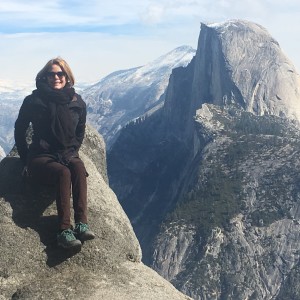
Kelly has worked with Naturalist Journeys since 2011. She assists our lead guides on trips to Alaska, the Pacific Northwest, Death Valley, the Eastern Sierras, California’s Central Coast, Yosemite National Park, Yellowstone and Grand Tetons, Utah’s National Parks, Belize and the Caribbean islands of Trinidad & Tobago. Kelly enjoys the outdoors, travel, nature, wildlife, and working with people. Kelly is a licensed wildlife rehabber and educator for Pacific Wildlife Care in San Luis Obispo county, and is a founding member of the organization. She is also the Owner/Broker of Central Coast Property Sales. She and her husband Art own a ranch in Cayucos on California’s Central Coast, where
they live with their large menagerie of birds and mammals, both wild and domestic. When not traveling, Art and Kelly welcome guests to find peace and quiet on their ranch in their B and B guest house.Other trips with Kelly Vandenheuvel
Essential Information +
Pace & Protocols +
Packing List +
Suggested Reading List +
Useful Links +
Photo credits: Photos by Bryan Calk





















